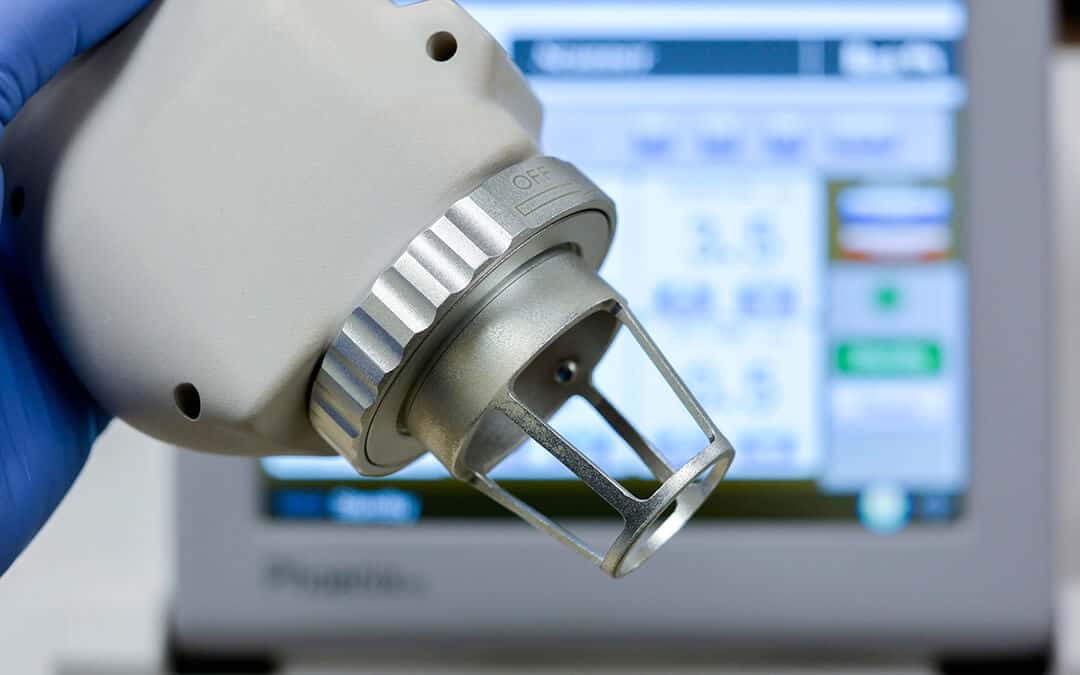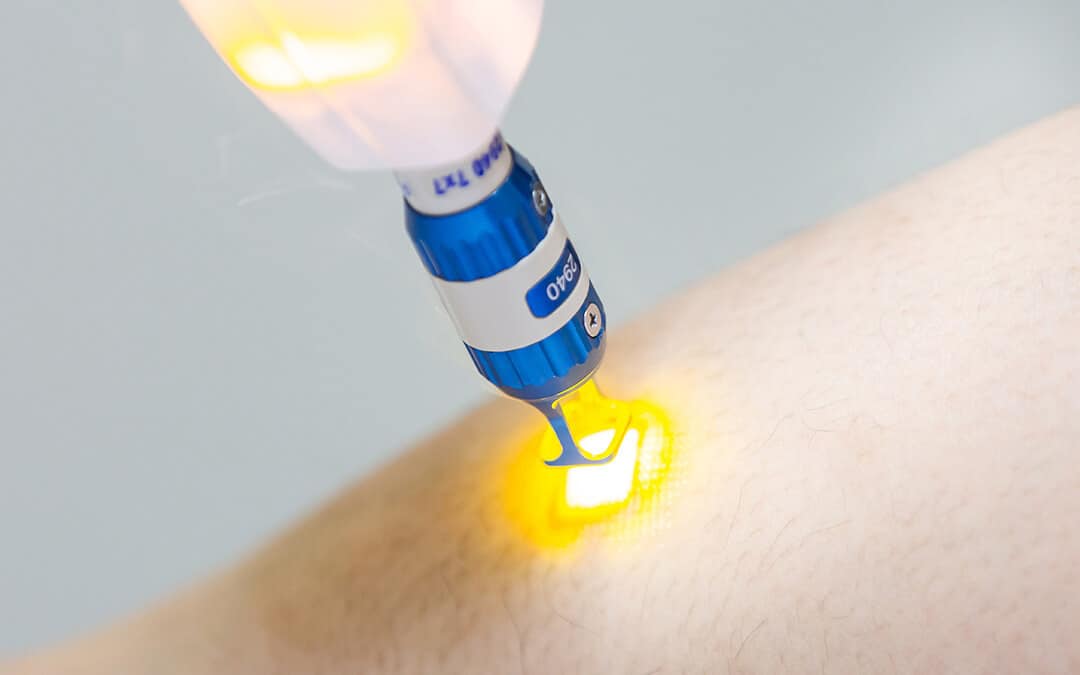Carbon dioxide is an atmospheric gas made up of one part carbon and two parts oxygen. A laser (light amplification by stimulated emission of radiation) is a controlled wavelength of energized light. A carbon dioxide laser comprises a mixture of charged gases: carbon dioxide, nitrogen, and helium. Within a glass tube, electricity illuminates the gas, and the resulting light – invisible, infrared – is magnified by mirrors on both ends of the tube. One of the mirrors allows light to pass through it, producing a powerful beam of laser light. The intensity of the mirror-reflected light is such that it can cut through materials as strong as wood and metal.
Carbon dioxide lasers emit light of a wavelength specific to the type of cutting required. The laser light needed to treat a skin condition need not be as strong as the light needed to cut steel. In laser treatment for skin, light beams penetrate the outer layers to reach the dermis, destroying the targeted, unwanted tissue with extreme heat. The resulting thermal damage stimulates the production of collagen, which heals the affected area with new epidermal cells.

Human skin is made up of three proteins: collagen, elastin, and keratin. Collagen is the most abundant protein in our bodies, providing structure not only for our skin, but also for bones, tendons, cartilage, teeth, and connective tissue. In general, collagen acts as the glue that holds us together. Elastin gives skin its elastic qualities, allowing growth and movement, expansion and contraction. Keratin, which makes up our hair and nails, gives the skin’s surface layer enough rigidity to encase – and protect – our bodies, from head to toe.
Our biological tissue is mostly water. Carbon dioxide lasers are effective for surgical use because they produce a frequency of light that is easily absorbed by water. A carbon dioxide laser can be used in place of a scalpel in many procedures, due to the precise cutting its light delivers. Other advantages of laser cutting over scalpel include minimal bleeding (due to the hemostatic properties of radiant heat), shorter surgery and recovery times, and reduced risk of infection or post-operative swelling.
An Alternative To Conventional Surgery
Layer by layer, carbon dioxide lasers vaporize targeted skin tissue, with minimal heat damage to surrounding areas. The emitted wavelength of high-energy light beams destroys skin cells with intense heat, while stimulating the formation of collagen to smooth out wrinkles and restore elasticity. As the underlying dermal tissue heals after surgery, healthy surface skin grows in place of wrinkles, lines, and former irregularities.
Overexposure to sunlight causes the collagen and elastin fibers in our skin to clump
together, creating – over time – visible damage. Other unwanted blemishes include acne scarring, stretch marks, uneven pigment, raised birthmarks, moles, warts, bumps, and growths both benign and malignant. Carbon dioxide lasers offer rejuvenating, restorative treatment for all of these skin conditions. They can also remove tattoos – often in a single session.
In skin-resurfacing procedures such as facelifts, carbon dioxide lasers vaporize larger areas of the skin, removing lines and wrinkles by promoting widespread collagen growth underneath the epidermis (outer layer of skin). Laser resurfacing produces an even skin texture, while preventing scarring or lightening of the affected areas. The treatment also creates a tightening effect, which can improve the appearance of skin loosened by age or sun exposure.

As an outpatient procedure, carbon dioxide laser resurfacing can be performed using local or general anesthesia, depending on the size of the area being treated or the complexity of the skin condition. Wrinkles around the eyes or mouth can be treated individually, or the entire face can be resurfaced.
Laser resurfacing is less abrasive and invasive than treatments such as dermabrasion, chemical peeling, and microneedling. It also triggers more production of dermal collagen, without physically manipulating – and potentially harming – the surrounding tissue.
When used with an operating microscope, carbon dioxide lasers enable a level of surgical accuracy not possible with other forms of tissue cauterization. The shallow penetration of skin tissue during laser treatment allows precise cutting and controlled cellular destruction – leaving healthy subcutaneous (and adjacent) tissue untouched and unharmed. As a benefit of its precision and efficiency, carbon dioxide laser treatment is typically followed by quick healing, reduced pain, minimal scarring – and better-looking skin.
Contact CalOx to learn more about our carbon dioxide delivery for dermatology, medical aesthetics, and med spas.
